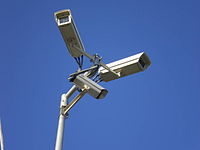
Photo from wikipedia
BackgroundNew emerging diseases are public health concerns in which policy makers have to make decisions in the presence of enormous uncertainty. This is an important challenge in terms of emergency… Click to show full abstract
BackgroundNew emerging diseases are public health concerns in which policy makers have to make decisions in the presence of enormous uncertainty. This is an important challenge in terms of emergency preparation requiring the operation of effective surveillance systems. A key concept to investigate the dynamic of infectious diseases is the basic reproduction number. However it is difficult to be applicable in real situations due to the underlying theoretical assumptions.MethodsIn this paper we propose a robust and flexible methodology for estimating disease strength varying in space and time using an alternative measure of disease transmission within the hierarchical modeling framework. The proposed measure is also extended to allow for incorporating knowledge from related diseases to enhance performance of surveillance system.ResultsA simulation was conducted to examine robustness of the proposed methodology and the simulation results demonstrate that the proposed method allows robust estimation of the disease strength across simulation scenarios. A real data example is provided of an integrative application of Dengue and Zika surveillance in Thailand. The real data example also shows that combining both diseases in an integrated analysis essentially decreases variability of model fitting.ConclusionsThe proposed methodology is robust in several simulated scenarios of spatiotemporal transmission force with computing flexibility and practical benefits. This development has potential for broad applicability as an alternative tool for integrated surveillance of emerging diseases such as Zika.
Journal Title: BMC Medical Research Methodology
Year Published: 2019
Link to full text (if available)
Share on Social Media: Sign Up to like & get
recommendations!